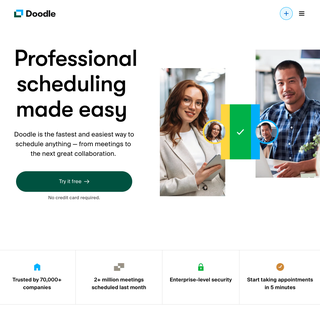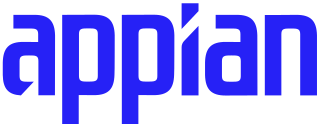Related Research Articles
A fourth-generation programming language (4GL) is a high-level computer programming language that belongs to a class of languages envisioned as an advancement upon third-generation programming languages (3GL). Each of the programming language generations aims to provide a higher level of abstraction of the internal computer hardware details, making the language more programmer-friendly, powerful, and versatile. While the definition of 4GL has changed over time, it can be typified by operating more with large collections of information at once rather than focusing on just bits and bytes. Languages claimed to be 4GL may include support for database management, report generation, mathematical optimization, GUI development, or web development. Some researchers state that 4GLs are a subset of domain-specific languages.
An application program is a computer program designed to carry out a specific task other than one relating to the operation of the computer itself, typically to be used by end-users. Word processors, media players, and accounting software are examples. The collective noun "application software" refers to all applications collectively. The other principal classifications of software are system software, relating to the operation of the computer, and utility software ("utilities").
Web development is the work involved in developing a website for the Internet or an intranet. Web development can range from developing a simple single static page of plain text to complex web applications, electronic businesses, and social network services. A more comprehensive list of tasks to which Web development commonly refers, may include Web engineering, Web design, Web content development, client liaison, client-side/server-side scripting, Web server and network security configuration, and e-commerce development.
Azure DevOps Server, formerly known as Team Foundation Server (TFS) and Visual Studio Team System (VSTS), is a Microsoft product that provides version control, reporting, requirements management, project management, automated builds, testing and release management capabilities. It covers the entire application lifecycle and enables DevOps capabilities. Azure DevOps can be used as a back-end to numerous integrated development environments (IDEs) but is tailored for Microsoft Visual Studio and Eclipse on all platforms.

SharePoint is a web-based collaborative platform that integrates natively with Microsoft 365. Launched in 2001, SharePoint is primarily sold as a document management and storage system, although it is also used for sharing information through an intranet, implementing internal applications, and for implementing business processes.
In FOSS development communities, a forge is a web-based collaborative software platform for both developing and sharing computer applications.
Platform as a service (PaaS) or application platform as a service (aPaaS) or platform-based service is a category of cloud computing services that allows customers to provision, instantiate, run, and manage a modular bundle comprising a computing platform and one or more applications, without the complexity of building and maintaining the infrastructure typically associated with developing and launching the application(s), and to allow developers to create, develop, and package such software bundles.

WaveMaker is a Java-based low-code development platform designed for building software applications and platforms. The company, WaveMaker Inc., is based in Mountain View, California. The platform is intended to assist enterprises in speeding up their application development and IT modernization initiatives through low-code capabilities. Additionally, for independent software vendors (ISVs), WaveMaker serves as a customizable low-code component that seamlessly integrates into their products.
Mobile Business Intelligence is defined as “Mobile BI is a system comprising both technical and organizational elements that present historical and/or real-time information to its users for analysis on mobile devices such as smartphones and tablets, to enable effective decision-making and management support, for the overall purpose of increasing firm performance.”. Business intelligence (BI) refers to computer-based techniques used in spotting, digging-out, and analyzing business data, such as sales revenue by products and/or departments or associated costs and incomes.

TACTIC is a web-based, open source workflow platform and digital asset management system supported by Southpaw Technology in Toronto, ON. Designed to optimize busy production environments with high volumes of content traffic, TACTIC applies business or workflow logic to combined database and file system management. Using elements of digital asset management, production asset management and workflow management, TACTIC tracks the creation and development of digital assets through production pipelines. TACTIC is available under both commercial and open-source licenses, and also as a hosted cloud service through Amazon Web Services Marketplace.
A mobile enterprise application platform (MEAP) is a suite of products and services that enable the development of mobile applications. The term was coined in a Gartner Magic Quadrant report in 2008 when they renamed their "multichannel access gateway market".

Doodle is an online calendar tool for time management and coordinating meetings. It allows users to schedule and make arrangements collaboratively, among other features. Doodle is available on desktop and mobile platforms. Founded in 2007, the company is headquartered in Zürich and has offices in Berlin, Belgrade, Atlanta and New York City.

A kanban board is one of the tools that can be used to implement kanban to manage work at a personal or organizational level.

ProWorkflow is web-based project management application designed for managers and staff to plan, track, and collaborate to improve project delivery. ProWorkflow is now on its 8th iteration.
WorkflowGen is a web-based low-code business application creation solution developed by Advantys. As a workflow software and business process management (BPM) solution, WorkflowGen enables organizations to automate human and system-based processes via a visual interface in a low programming environment.
A low-code development platform (LCDP) provides a development environment used to create application software, generally through a graphical user interface. A low-coded platform may produce entirely operational applications, or require additional coding for specific situations. Low-code development platforms are typically on a high abstraction level, and can reduce the amount of traditional time spent, enabling accelerated delivery of business applications. A common benefit is that a wider range of people can contribute to the application's development, not only those with coding skills, but good governance is needed to be able to adhere to common rules and regulations. LCDPs can also lower the initial cost of setup, training, deployment, and maintenance.

Appian Corporation is an American cloud computing and enterprise software company headquartered in McLean, Virginia, part of the Dulles Technology Corridor. The company sells a platform as a service (PaaS) for building enterprise software applications. It is focused on low-code development, process mining, business process management, and case management markets in North America, Europe, the Middle East and Southeast Asia.

No-code development platforms (NCDPs) allow creating application software through graphical user interfaces and configuration instead of traditional computer programming based on writing code.
AppSheet is an application that provides a no-code development platform for application software, which allows users to create mobile, tablet, and web applications using data sources like Google Drive, DropBox, Office 365, and other cloud-based spreadsheet and database platforms. The platform can be utilized for a broad set of business use cases including project management, customer relationship management, field inspections, and personalized reporting.
References
- 1 2 3 4 5 Frank, Ulrich; Maier, Pierre; Bock, Alexander (December 29, 2021). "Low Code Platforms: Promises, Concepts and Prospects: A Comparative Study of Ten Systems". ICB Research Reports (70). doi:10.17185/duepublico/75244 – via duepublico2.uni-due.de.
- ↑ Sacolick, Isaac (April 4, 2022). "5 ways to improve on spreadsheets for business workflows". InfoWorld .
- ↑ "Places to Work in 2020". Outside . November 3, 2020.
- ↑ Lai, Eric (August 20, 2007). "Trackvia is latest entrant in Database 2.0 market". Computerworld .
- ↑ Hendrickson, Mark (November 10, 2007). "Blist Prepares Easy Web-Based Database Application".
- ↑ Marvin, Rob (August 10, 2018). "The Best Low-Code Development Platforms". PCMag Australia.
- 1 2 "TrackVia Review". PCMag .